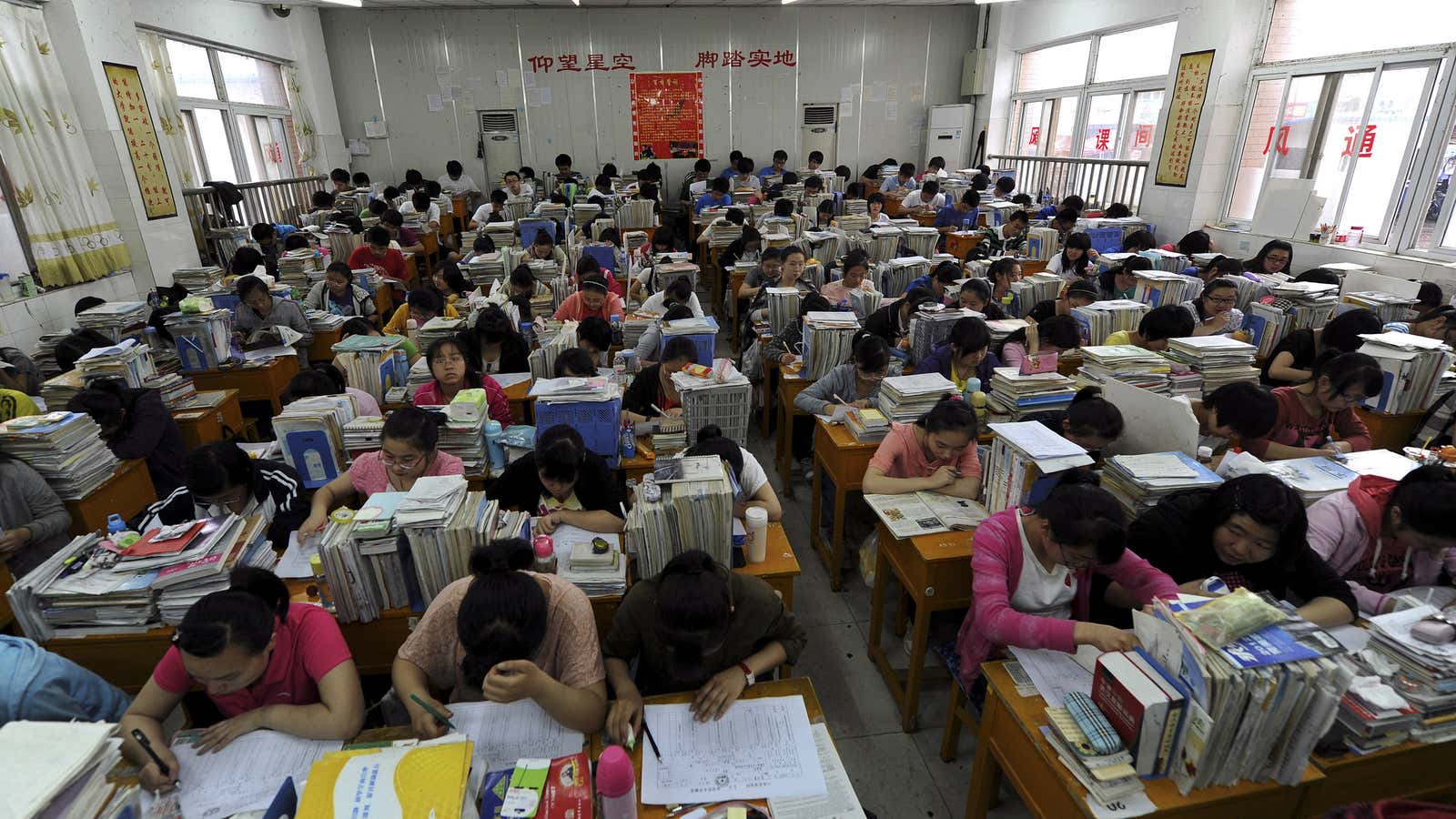East Asian students are known for trouncing most of the world in math, science, and reading. There are countless measures of the ways in which they top the charts.
Among the reasons cited for this academic prowess are government investment in and respect for teachers, as well as cultural norms that place high expectations on academic achievement.
Less focus is placed on the fact that parents across the region put a lot of money on extra education to give their kids a leading edge.
According to a story from EdSurge, Asian households spend about 15% of their income on supplemental education services, compared to a mere 2% spent by their American counterparts. For a basic sense of comparison, beyond the big ticket items of food, housing, and healthcare, Americans spend about 12% of their money on new car and truck purchases, and gas.
Global Industry Analysts estimates the global tutoring industry will be worth $200 billion by 2020, with the Asia-Pacific region growing at 10.7% per year for the next 10 years, according to the Financial Times (paywall). More than 70% of secondary school-aged kids in Taiwan, Hong Kong, and South Korea use private tutors, with some tutors earning a tidy $8 million a year.
South Korea is particularly notorious for its private, after-hours tutoring centers, called hagwons. When the government tried to crack down on these facilities, imposing curfews and staging 11pm raids to make sure that the kids had gone home, it turned out many just snuck into their tutors’ homes to keep up the work.
Tony Wan, writing in EdSurge, said the intense focus on tutoring is fueled by cultural tradition:
The masochistic obsession with studying has deep roots. China boasts the longest continuous history of standardized testing, dating back to the imperial examinations starting in its second dynasty, in 206 BC.
Those deep-seated values are driving a massive surge in investment in educational technology: According to Goldman Sachs, edTech companies in China raised more than $1.2 billion in 2016, more than triple the amount raised in 2014 (US edTech raised $1 billion last year). “Asian consumers and businesses alike are culturally prone to seeing education as an investment and not an expenditure,” Alison Baum, Managing Partner at Fresco Capital, said to EdSurge in an email.
Many Asian governments say they are trying to rein in high-stakes testing, recognizing that there are other skills that matters as well, such as creativity, agency, and critical thinking. The Singapore government has a public relations campaign emphasizing that it is trying your best that matters, not exam results; in China, cultivating students’ “entrepreneurship and innovation capabilities” was identified in China’s 5-Year Plan for 2016-2020.
Governments say parents are the biggest obstacle. Even though there is ample evidence that high-stakes test are bad for kids, competitive parenting gets in the way of student wellbeing. “There is nothing wrong with parents trying to do the best for their children,” Manu Kapur, a professor of psychological studies at the Education University of Hong Kong, and former head of curriculum, teaching, and learning at the National Institute of Education of Singapore told Quartz. “It’s what they value as being good. That has to change.”
